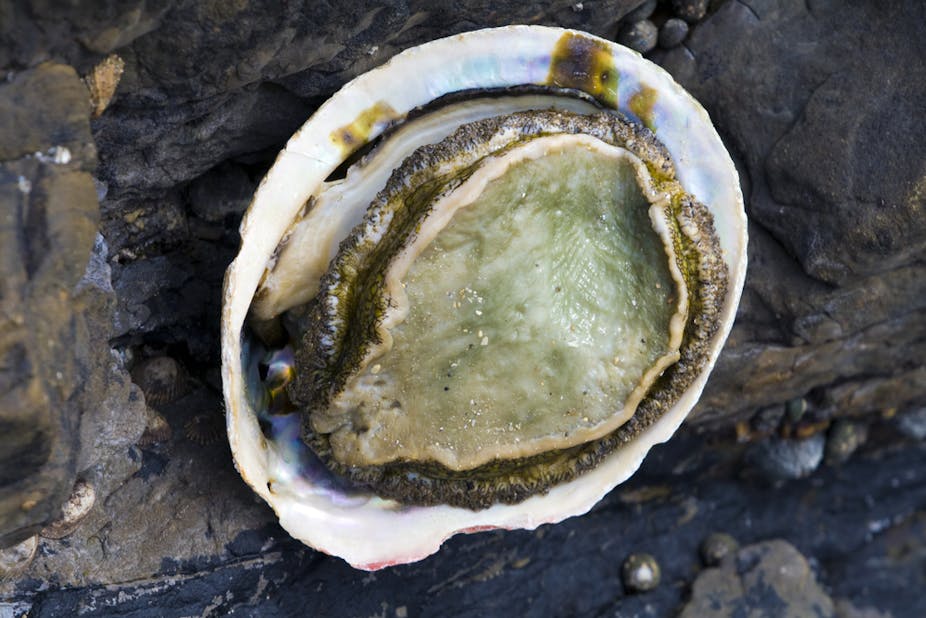Wildlife poaching has long been a subject of interest in academia. Research by biologists, zoologists and environmental scientists mostly focused on the impact of these crimes on wildlife populations and their habitat. More recently, criminologists interested in different types of environmental crimes, have started studying poaching.
This is because of the realisation that poaching affects more than wildlife: it has implications for developing nations’ economies and often involves transnational criminal enterprises.
Theories developed to understand street criminals’ behaviour are now being applied to green criminology. The hope is that this will help identify the causes of wildlife crimes, provide offender profiles and facilitate practical solutions. One of the focus areas is abalone poaching. It’s an in-demand and expensive delicacy, and wild and farmed abalone fisheries are common in the Western Cape.
It is legal to harvest wild abalone (with permits and adherence to number limits) but poaching in the wild fisheries has steadily increased since the mid-1990s. This is partly because of the social, political and economic changes in South Africa after apartheid. A weak economy, high unemployment, and ineffective policing have contributed to the rise in abalone poaching. So too has the presence of Asian criminal enterprises in the region and increasing market demand for abalone from Asia.
In 2013 I conducted an exploratory analysis of abalone poaching in a South African national park to see whether the “routine activities theory” might be useful in tackling the problem. This theory, which falls under the concept of situational crime prevention, contends that crime happens when three elements converge: a motivated offender, a suitable target and a lack of security or motivational guardianship.
Motivated offenders are the opportunistic criminals often present in socially disorganised communities. Suitable targets are accessible, valuable and desirable. Guardianship includes law enforcement and physical barriers. According to the theory, crime rates vary based on changes to these elements.
Applying the theory in a national park
The concept of situational crime prevention is useful in wildlife crime research. It draws on other theoretical approaches like opportunity theory. Opportunity theory is concerned with the availability of opportunities to commit crime. It also contends that offenders make rational choices or decisions selecting targets with little risk and high reward.
Among the national parks I visited was Table Mountain in the Western Cape. It’s a well established and frequently visited park in the densely populated Cape Town area. It has a full staff of rangers including an investigative unit, modern infrastructure to facilitate tourism and controlled access from land. There’s a marine protected area offshore that is home to abalone.
The rangers didn’t deter motivated offenders from targeting the park. Some poachers were subsistence hunters and sport divers who only took a few. Others were small-scale commercial poachers who legally entered the park by car and operated from the coastline, taking dozens of the molluscs at a time. The area was also targeted by large commercial operations that entered the marine protected areas in boats and dispatched scuba divers to poach hundreds of abalone.
Those are the offenders. Then there’s the “suitable target”: abalone itself. In 2013 poachers sold abalone for between USD$10 to sometimes USD$40 per kilogram. The value increased as it moved to traffickers and later to overseas wholesalers, where it reached a few hundred dollars per kilogram. Some final retail prices have even exceeded USD$3000 per kilogram in Hong Kong’s markets
Security makes the difference
The key preliminary finding from the research was how variations in proper guardianship or security affected poaching. A park’s fencing had little influence on offender behaviour since land based poachers could legally enter by pretending to be tourists.
The major factor was the size and capability of ranger units. They need to continuously watch visitors and boats near the abalone habitat. Poachers quickly exploited the lack of security in these areas. I found no evidence of collusion between rangers and poachers.
So what are the possible solutions? These may include more remote surveillance from fixed cameras in parking lots and along the coastline, and by drones over the water. Funding for these improvements could come from charging increased fees for park admission or fishing licenses. Adding more rangers to monitor park visitors for suspicious activity along with further enhancing the park’s dedicated anti-poaching officers would be effective and is necessary.
Table Mountain had a motivated and capable investigative unit that was specially training in anti-poaching, including offshore operations, and able to deal with armed offenders should the need arise.
Anti-poaching efforts also need a sufficient number of well maintained patrol boats that allow armed rangers to physically check the activities of suspicious boats and sport divers in the protected areas.

